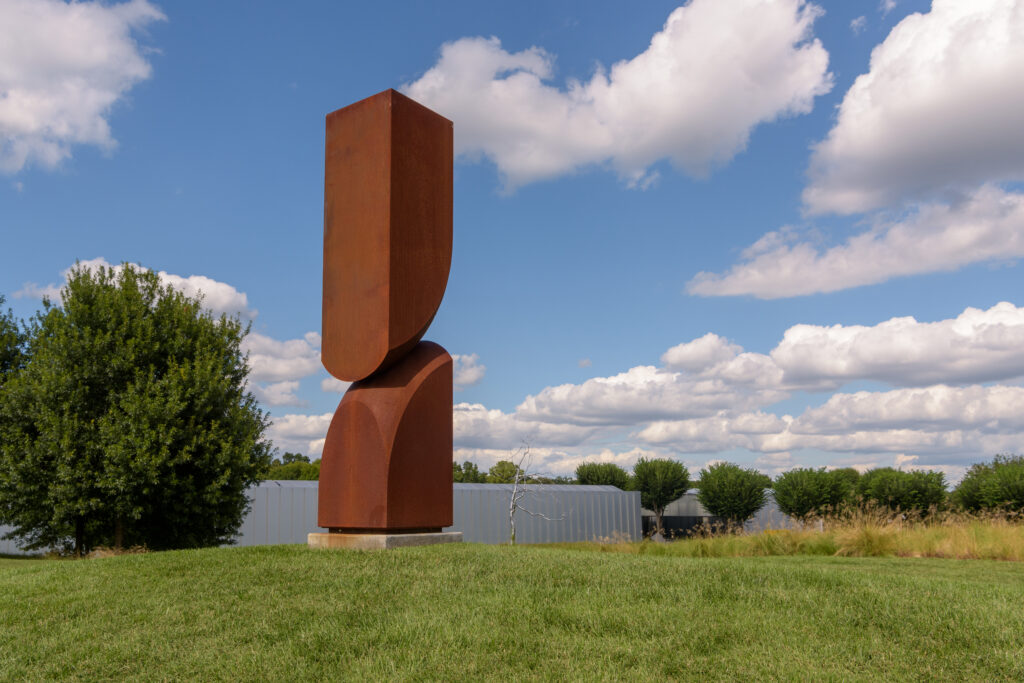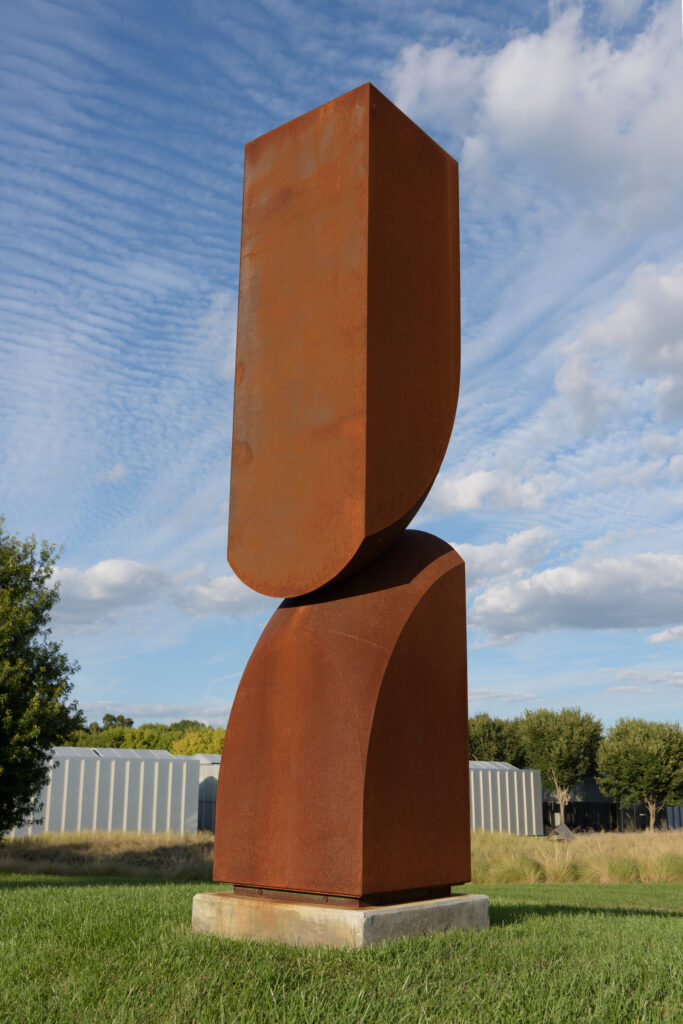Union 060719 (work of art)
Artwork Info
Key Ideas
- This abstract sculpture appears to be both heavy and weightless. The use of metal as the medium gives the sculpture visual weight. Its height and shape create the illusion that the larger form is balancing on top of the smaller one.
- The sculpture is made from a steel alloy that was originally designed for railroad coal wagons. Its rusted patina is the result of being exposed to outdoor elements. The patina protects the metal from corrosion.
- Hoss Haley is a metal sculptor based in Asheville, North Carolina.
- Haley’s interest in using industrial materials and fabrication methods was influenced by his childhood in rural Kansas and his job as an architectural blacksmith’s apprentice in New Mexico.
- This sculpture is part of Haley’s Correction Line series. He grew up on a farm that was located on a road named Correction Line.
Learn More
Union 060719 is an abstract sculpture made up of two rectangular forms that are vertically stacked on top of each other. The two ends that meet have been tapered into rounded shapes, making the form appear to be both heavy and weightless. The sculpture is made from Cor-Ten steel (also known as weathering steel), which was originally designed for railroad coal wagons. It is a steel alloy that develops a rusted patina over time when exposed to the elements. The rusted patina actually protects the metal from corroding. The artist’s use of steel as his medium gives this work visual weight. This sculpture’s height and shape create the illusion that the larger form is balancing on top of the smaller one.
My work is the direct result of an ongoing dialogue with metal. The common perception of metal, especially steel, is that it is a rigid, inflexible material. In fact, it can be both pliable and receptive.
Hoss Haley
Hoss Haley is a metal sculptor who lives and works in Asheville, North Carolina. His use of industrial materials and fabrication methods in his art was inspired by his personal experiences. He grew up on a farm in rural Kansas, where he often saw abandoned and rusting farm machines. He later worked as an architectural blacksmith’s apprentice in New Mexico.
This sculpture is part of Haley’s Correction Line series. His family’s farm in Kansas was located on a road named Correction Line. This series title is also a reference to the Land Ordinance of 1785. This was a law passed by the United States Congress calling for public land to be divided into six-mile square parcels that could be bought, sold, or traded. Federal surveyors used the east and west latitude points known as “correction lines” to measure and divide the plots of land accurately.
Additional Resources
Resources for Teachers
- Read a short article about Haley’s career.
- Read a review of an exhibition of the artist’s work.
- Visit the artist’s website to explore his Correction Line series.
Resources for Students
- Watch a video of Haley in his studio.
- Watch a documentary about the artist.
- View more examples of the artist’s work.



